I recently bought the oldest camera in my collection so far, the 6x9 medium-format german Zeiss Ikon Nettar 517/2. Don’t mind the huge name, this is how it looks:

Zeiss Ikon Nettar 517/2
And some technical information, according to Camera-wiki.org:
Manufacturer: Zeiss Ikon
Country of Origin: Germany
Production period: 1951 to 1953
Alternate name: Nettar IIc
Film Format: 120 roll film (8 exposures format 6×9cm)
Viewfinder: optical, built into top cover
Lens/shutter combinations: Novar Anastigmat 1:4.5/105mm - Pronto leaf shutter
It’s a medium-format camera that uses 120-type film. For those who don’t know much about film photography, the more common type of film is 35mm, the ones with the iconic canister that, if you’re older than 30 years old, you’ll know that for sure. But among many other types, there was medium-format, both 120 and 220 types. Quick glossary about it:
| Term | Explanation |
|---|---|
| Medium format | Refers to the width of the film: 6cm. As a reference, 35mm is 3.5cm. |
| 120/220 | Refers to the length of the film, 220 having double the length of a 120 film roll. |
| 6x6, 6x7, 6x9, etc | These are the size of negatives that some cameras are able to shoot using medium-format film. Unlike 35mm that all cameras pretty much had the same negative size, medium-format cameras have a wider range of formats. |
For more information about film formats, this page is really awesome.
The good thing about shooting medium-format is that the negatives are comparable to the ones of IMAX, depending on the ratio you use; 6x9 in this camera is even bigger. It’s bigger than any full-frame digital camera! The bad thing, however, is that you can only get 8 photos out of a 120 roll.
It’s a folding camera, it means that the (fixed) lens is mounted at the end of a folding leather cloth that works as a camera obscura. It’s more portable when it’s folded and weights a lot less than a complex lens with lots of elements, but it’s prone to holes in the cloth, as well as wear-off. It has no rangefinder, which means you have to focus by range or just by guessing the distance to the subject.
Camera Introduction
I had another medium-format camera, the Yashica 124, a 6x6 TLR camera, but I’ve been trying to get a camera that shoots other negative sizes, more specifically 6x7 or 6x9. Unfortunately, 6x7 cameras are very popular, so they’re expensive. I mean, REALLY expensive. A Mamiya 7, for example, costs around $3k. For my surprise, those old foldable cameras are cheaper, definitely because of its mechanism being simpler. I bought that on eBay, from a German seller, and it came with a beautiful leather case and with the original manual, in German!

Original Manual of the Nettar, in German
And it contains many beautiful images in it, all from early 50’s:

Some of the images in the manual. I apologize for the moiré effect, these type of paper printing is interesting
One page in particular caught my attention. A hand-written name and address, which I assume is from the first/original owner:
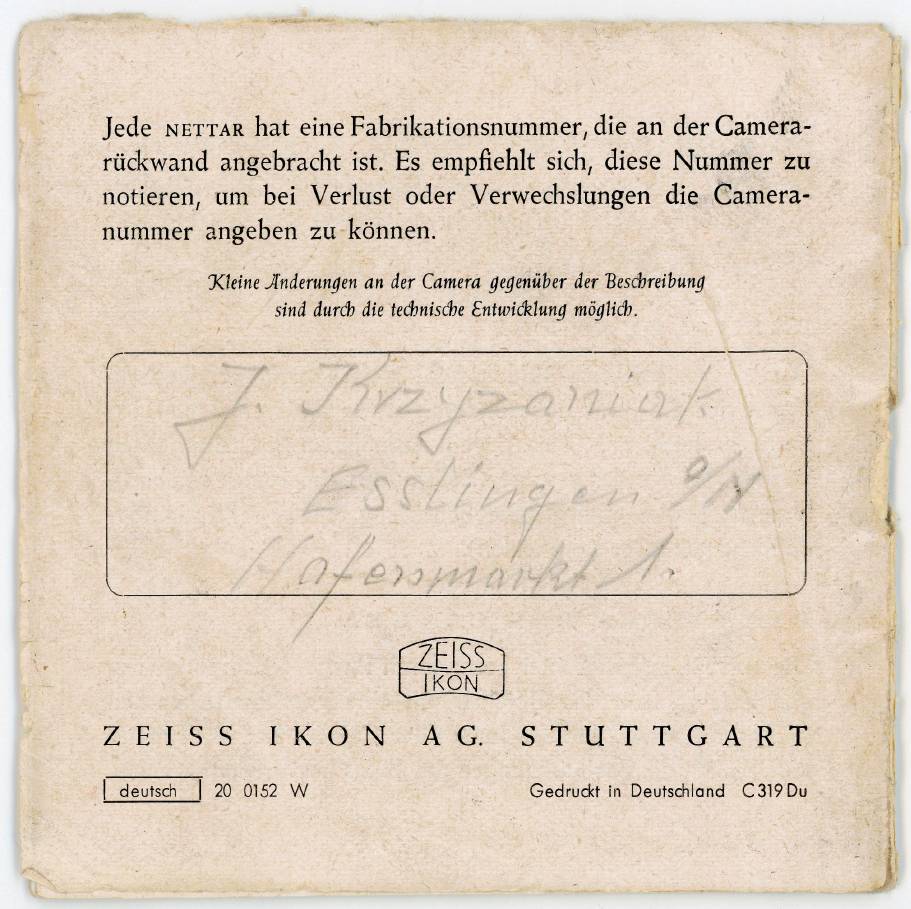
Original Owner of Nettar
It says that you’re supposed to note the “serial number” in that field, but the owner decided to identify himself/herself! It looks like the name of the person is J. Kvzyzaniat, and the address is Hafenmarkt 1, Esslingen, which according to Google Maps, would be that building in the center:
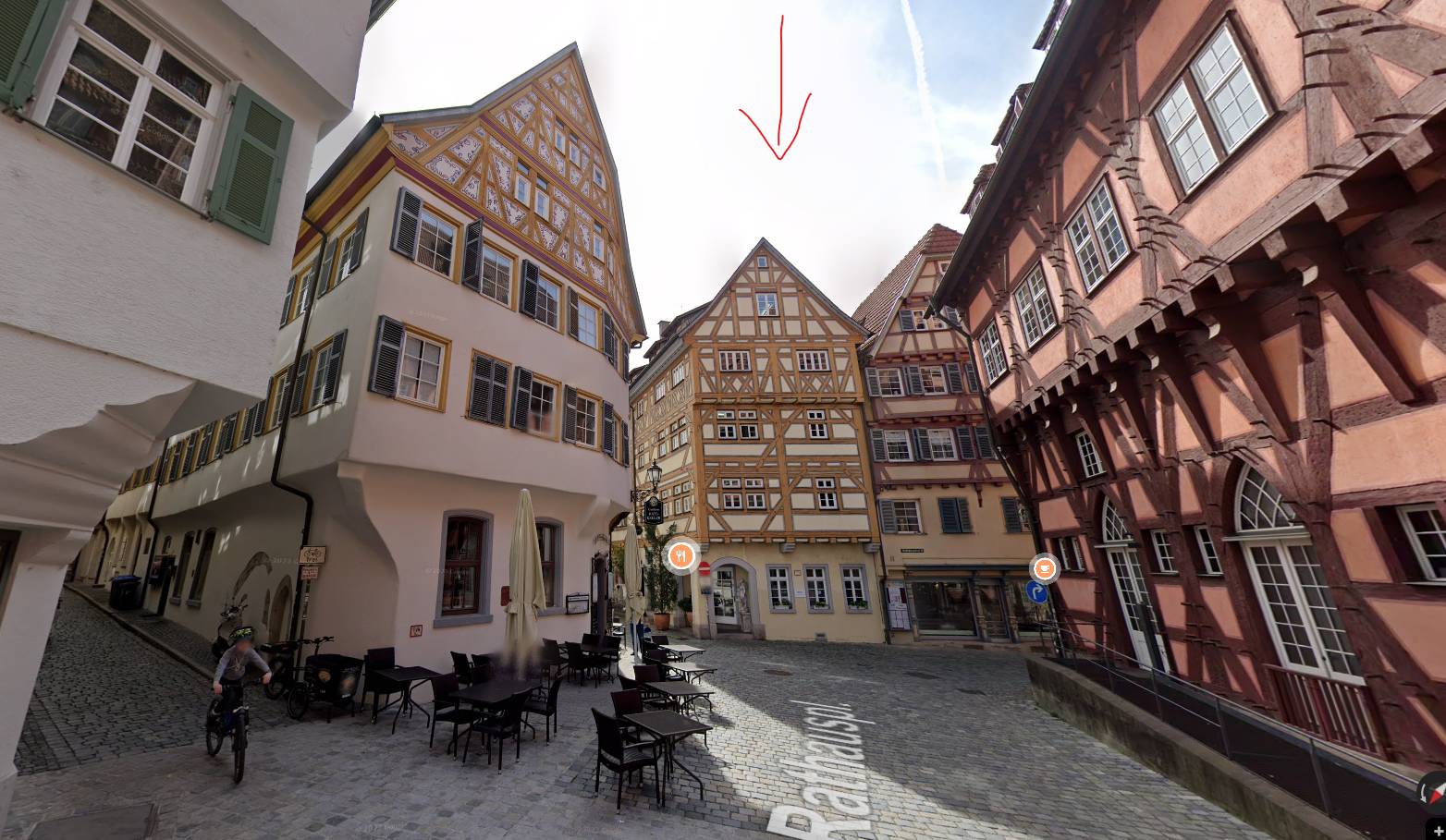
Where the original owner of this camera lived. Such a cute neighborhood!
Another interesting thing about this manual is that at any moment it refers to the camera as 517/2, or even IIc, as it says in the Camera-wiki.org article, it refers to it just as Nettar II. I know it’s the same camera because apparently it’s the only one with the round design around the viewfinder (which I think is definitely the best-looking one). Maybe those number notations came only after.
Well, I scanned the whole manual and you can view it here, in case you’re interested: Nettar 517/2 Instruction Manual
First shot
First thing I do when I get a new camera, especially from eBay or less reputable sources, is check if it looks like it’s working with all lens appertures and different shutter speeds. Then I put on a cheap black and white film roll through it and take some pictures. I went to the park close to home, in one of the last warm-ish days of the year of 2023 and took some pictures using a tripod. I decided to go for a more static approach at first because, I don’t know if those pictures make justice to the size of the camera, but that camera is absultely gigantic!
Finished the 8 pictures in less than half an hour and sent it to a lab right after. Two weeks later I got back the negatives and scanned them in my Epson flatbad scanner. It pretty much worked out flawlesly! Except for maybe two photos with a little bit of a light leak, they were pretty gorgeous, even though the light was harsh. Here are some of the pictures I took, with reduced size and quality, for the sake of this server’s price. The negatives were scanned in 6000x3842:

This beautiful building behind the trees in the park

Two women walking the kids at the park
I was very glad with these pictures. So it was time for a real use!
Taking it to vacations!
In november we took a week-long vacation in Mallorca. I took my Fuji X-T20 for the first time in over a year. But I also brought two film cameras, the Yashica T3 and the Nettar, just in case. With it, 3 rolls of medium-format color film: Gold 200, Portra 400 and Lomo 400. I didn’t take any tripod, that’d have to be all handheld.
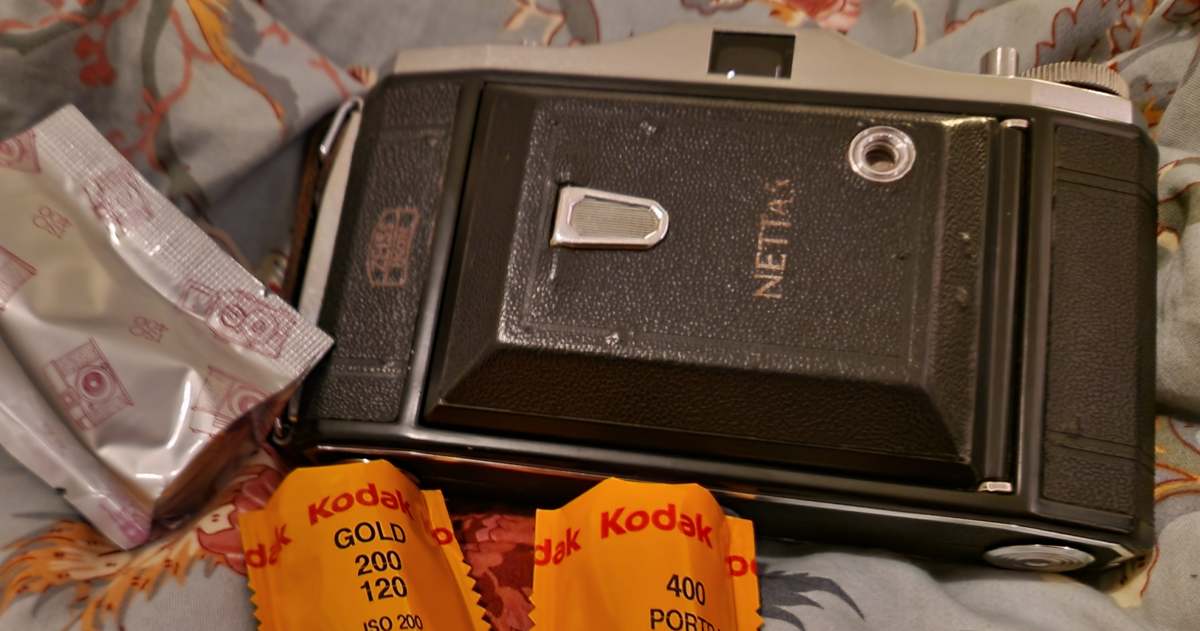
The Nettar and the three rolls of film
There was a total of 24 photos to be taken. However, I messed up the first shot of Portra, so 23. I found the experience of shooting it handheld pretty good actually. It’s huge and heavy, so no way carrying that on my hands all the time. But every time I found a good possible picture, I’d take my time, grab the camera in the bag, take it from the case, configure the apperture, shutter speed and focus and boom:

Beautiful landscape in the mountains of Mallorca
This time I opted for a more professional lab, the cool guys at Safelight Berlin, and got the best scans I could ask for. I shipped my rolls from Düsseldorf to Berlin and in pretty much a week I got back those scans, at an incredible size of 7000x5000! The ones I’m posting here are a lot smaller and with the quality drastically reduced.
The images were absolutely gorgeous. It was definitely my best experience shooting medium format so far. I did get a couple that were a bit underexposed and this one with some back light-leak, that I can’t really tell if it’s because of the camera’s light seals or just the little window in the back that displays the current film count:
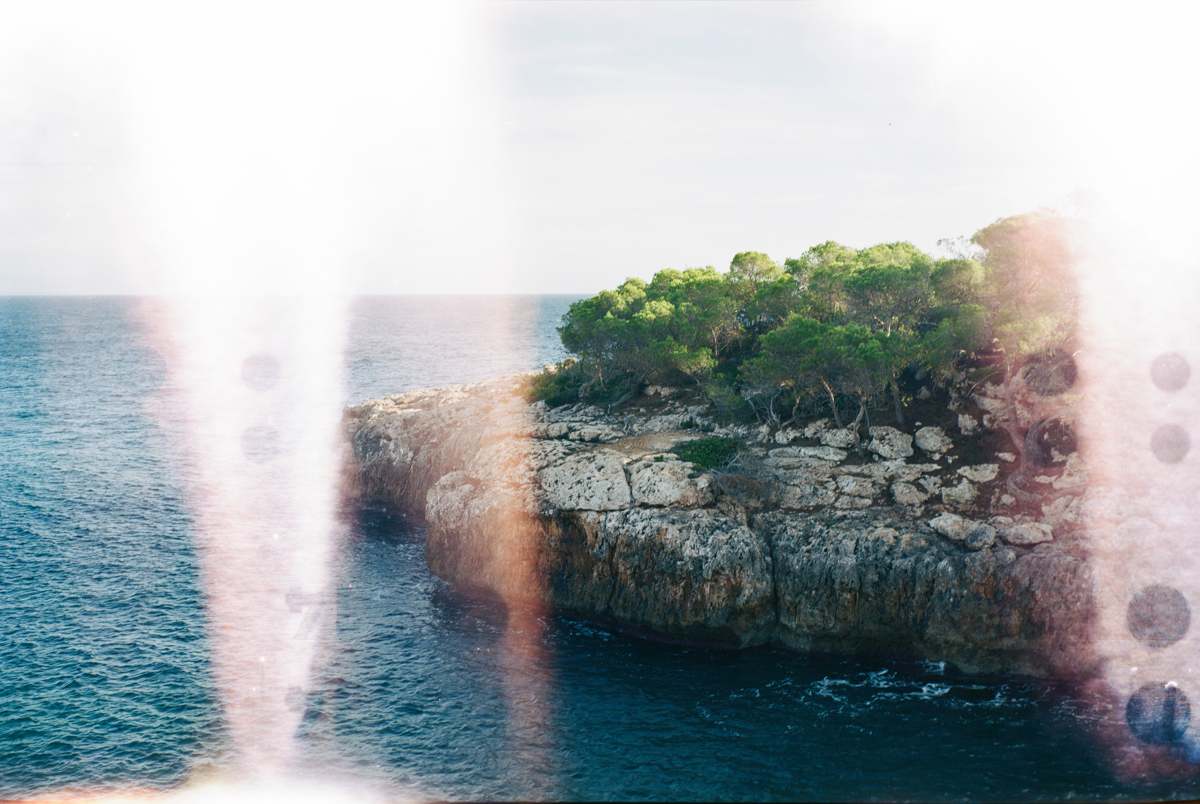
A lightleak, nonetheless I love this picture
These lightleaks are just happy little accidents, and I love them.
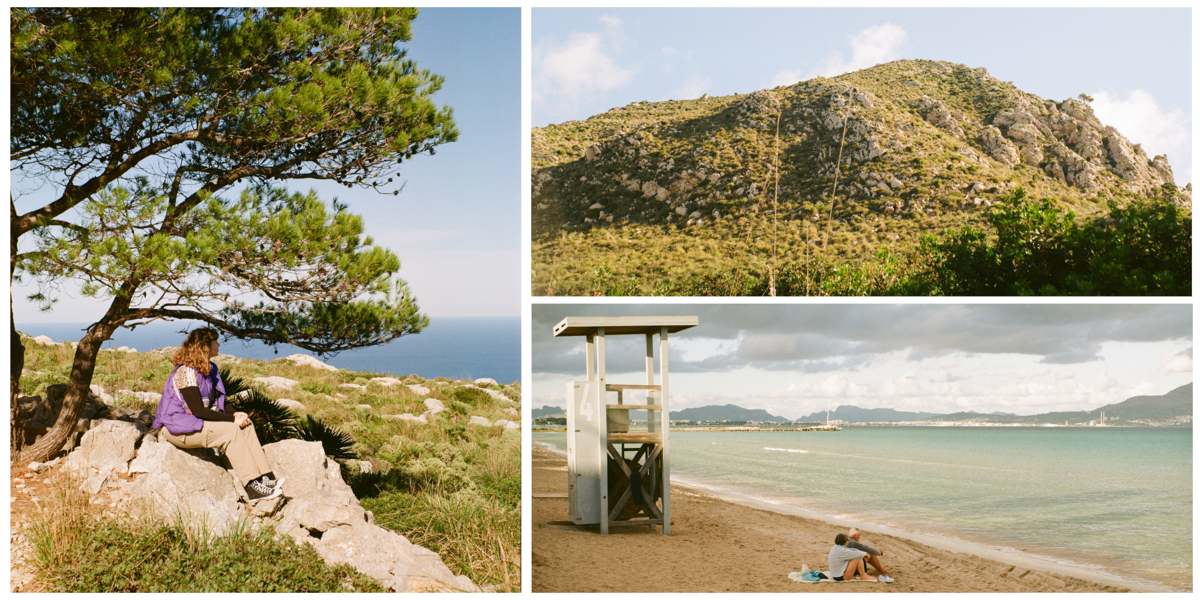
Some other photos from those rolls
In the end, I think it’s a really cool camera, especially for landscapes in bright days. I’ll definitely take it out more often.
To finish up, there’s this one, that I cropped a bit to look more “panoramic”:
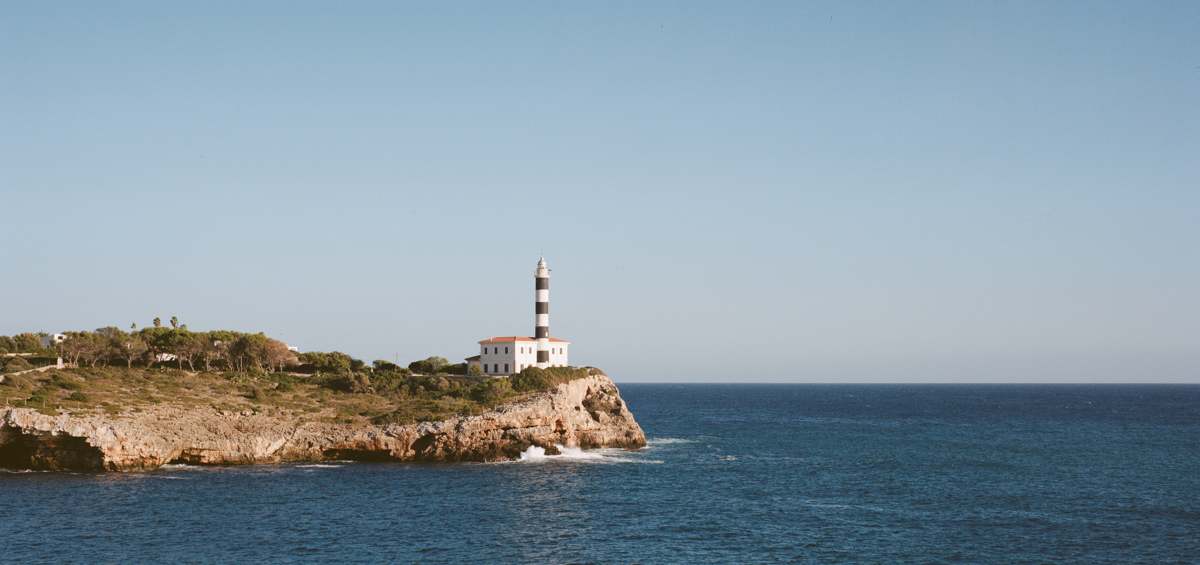
Panoramic photo of a lighthouse